METROJR-ORBIT Data Sheet
Andre DeHon
Original Issue: August 1993
Last Updated: Fri Nov 5 13:23:09 EST 1993

METROJR-ORBIT is a minimal implementation of the METRO router architecture (tn73) fabricated in a gate-array technology through Orbit Semiconductor. METROJR-ORBIT is a crossbar routing component suitable for constructing dilated, indirect, multistage networks. This component features:
METROJR has 4-bit wide, cascadable datapaths. It support 4 input
and 4 output channels and can be configured either as a dilation one or
dilation two routing component. Table summarizes the
values of the METRO architecture variables which characterize
METROJR-ORBIT. METROJR-ORBIT provides full support for port
enable/disable and fast-path reclamation. METROJR-ORBIT support
configuration using an IEEE 1149 compatible TAP [Com90] (See
Section
), but does not support boundary scan.
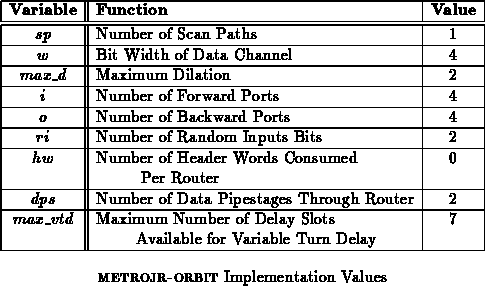
The second scan path ( TCK<1>, TMS<1>, TDI<1>, TDO<1>, TRST_L<1>) is a placeholder for future revisions which may support two scan paths. TDI<1> is connected directly to TDO<1> and the other signals are unused.
METROJR-ORBIT does not checksum the data streams it handles as would a full implementation of the METRO architecture. Instead, METROJR-ORBIT returns a pair of fixed patterns in place of the checksum. Since the basic fault-tolerance depends on the end-to-end checksums and not the router checksums, this omission does not prevent METROJR from serving as a fault-tolerant router (See details in (tn75)). The omission may make fault-localization more difficult than it would otherwise be.
METROJR requires 67 signal pins. Packaged in an 84-pin PLCC package,
we have 17 power and ground pins (9 ground, 8 VCC).
Figure shows the assignment of signal pins to package
pins.
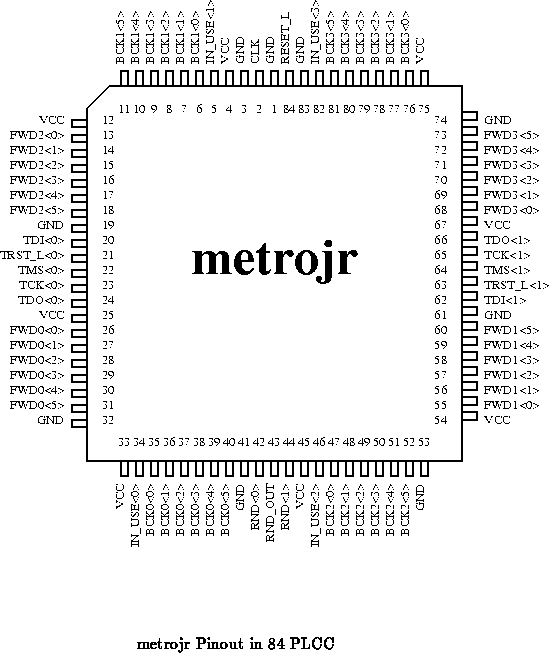
The pins function as follows:
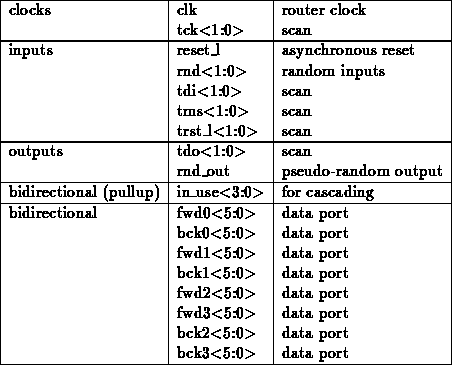
METROJR-ORBIT has a single, functional TAP for configuration. It
supports three non-bypass registers on the data scan path, and hence three
non-bypass instructions. Table summarizes all the scan
registers. All three scan configuration register must be loaded with
meaningful values in order for the component to perform properly.
Configuration registers will retain their values across chip reset, but
will not retain their values when the chip is powered down.
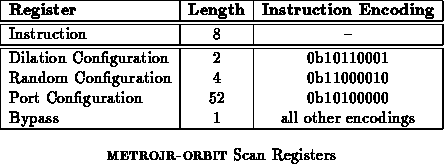
When an instruction-shift is initiated through METROJR-ORBIT, the router will place the value 0b11000101 onto the scan path to comply with the IEEE TAP specification and to serve as an ad hoc component identification.
Table summarizes the encodings used in the dilation
register. This register controls whether METROJR orbit behaves as a
radix-4, dilation-1 (
,
) router or as a radix-2, dilation-2
(
,
) router.
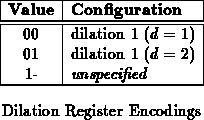
METROJR-ORBIT bases its random port selection in dilation-2 mode
on two nominally-random input bits. For purposes of testing,
METROJR-ORBIT can be configured to treat either or both inputs as a
constant value. The four bits in the random register configure both random
inputs separately as shown in Table .
Table
shows the encoding values used to configure each
random input.

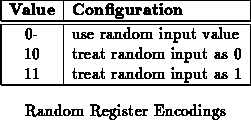
Each forward port has seven bits of configuration in the port
configuration register, and each backward port has six.
Table shows the composition of this
register. All single bit fields are positive and the corresponding
behavior is enabled when the value is set to one. Variable turn delay
specifies the number of clock cycles in the round-trip delay between
between attached ports on distinct routers. Variable turn delay should be
set to zero when the interconnect is treated as a single pipeline stage
between routing components.
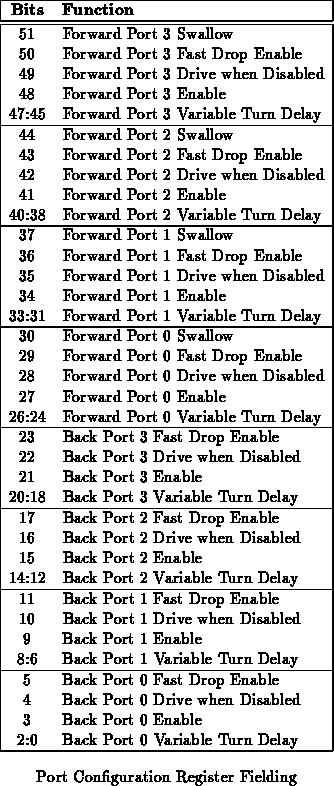
Table shows the encodings which METROJR
uses to implement the METRO routing protocol. When configured in
dilation-1 mode
specifies which of the four backward ports
out which the message should be routed. When configured in the dilation-2
mode,
is disregarded, and
specifies whether to route the
message out one of the high two backward ports or out one of the low two
backward ports. The STATUS value indicates the actual backward port
attained in undecoded form. If no backward port is allocated, the
STATUS value will be zero; otherwise, the bit corresponding to the
allocated backward port will be set and all others will be zero. Instead
of returning a real checksum, METROJR-ORBIT returns a fixed pattern
for CHECK0 and CHECK1. The sixth bit in each port is the
backward drop line used for fast-path reclamation. When this line is
asserted (high), the downstream router is blocked and is requesting that
the connection be collapsed.
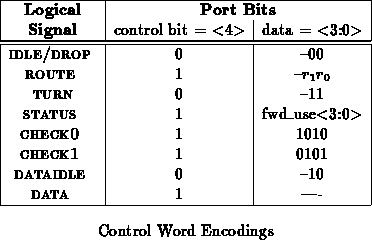
METROJR-ORBIT comprised approximately 11,000 gate-array gates and was fabricated on Orbit's base-array with 15K gates.
To Be Determined --
NIACT-ORBIT (tn92) and NOACT-ORBIT (tn91) have been designed to work with METROJR-ORBIT to link processing nodes up to a METRO style network. Both NIACT-ORBIT and NOACT-ORBIT have an 8-bit network datapath. Using METROJR-ORBIT's width-cascading feature, a suitable network may be composed from pairs of METROJR-ORBIT routing components. In their dual-routers mode, the ports from NIACT-ORBIT and NOACT-ORBIT are designed to attach directly to such a cascaded network.
